The Data Portfolio is a compendium of particle physics classroom activities organized by Data Strand, Level of student engagement, Curriculum Topics and NGSS Standards. Follow the links provided for information about using the Data Portfolio to plan your students’ experience. Level descriptions explain the data analysis skills that students apply at each level: tasks in Level 0 are simpler than those in Levels 1 and 2...
...While each level can be explored individually, students who start in one level and progress to more complex levels experience increasingly engaging and challenging tasks. These activities are aligned with NGSS Standards, particularly NGSS Practices.
Each Curriculum Topic provides connections between topics routinely covered in physics class and particle physics content and methods. Use the menus to find activities related to the content you are currently covering. Watch this screencast to learn more about sorting these activities.
We are making Spanish Language versions of the activities. To find the activities with Spanish versions, use the Curriculum Topics menu, scroll to the bottom, select Spanish Language then Apply.. Special thanks to Danelix Cordero-Rosario from the Puerto Rico Center for providing these translations.
QuarkNet has entered the world of data science. Use the Curriculum Topic menu to locate the Skill: Coding option then Apply.
We want your feedback on how the activities worked for you. Please complete the feedback form to help us improve our activities.
| Activity Name | Data Strand | Level | Curriculum Topics | NGSS Practices |
|---|---|---|---|---|
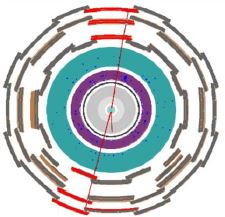 ATLAS Data Express
ATLAS Data ExpressATLAS Data Express is a short investigation in which students inspect and characterize Z events in the LHC and distinguish muons from electrons. |
LHC | Level 2 | Conservation Laws, Instrumentation, Nature of Matter, Skill: Developing Models, Skill: Histograms, Skill: Uncertainty | 1, 2, 4, 5, 6, 7, 8 |
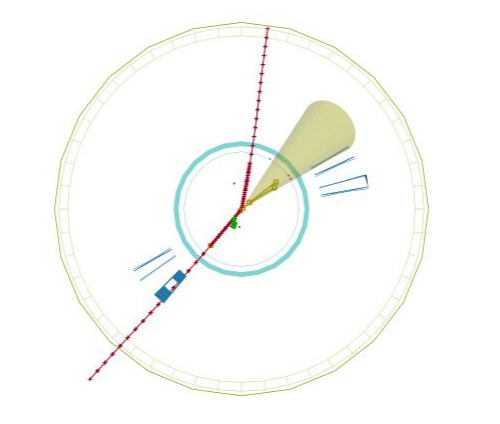 CMS Data Express
CMS Data ExpressCMS Data Express is a short investigation in which students inspect and characterize W or Z events from the LHC. |
LHC | Level 2 | Conservation Laws, Nature of Matter, Skill: Developing Models, Skill: Histograms, Skill: Uncertainty | 1, 2, 4, 5, 6, 7, 8 |
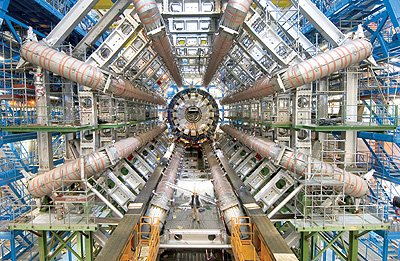 ATLAS Z-path Masterclass
ATLAS Z-path MasterclassStudents are physicists for a day at a university or lab where they work with physiists to how to analyze real particle physics data in the form of event displays. |
LHC | Level 2 | Conservation Laws, Nature of Matter, Skill: Histograms, Skill: Uncertainty | 1, 2, 4, 5, 6, 7, 8 |
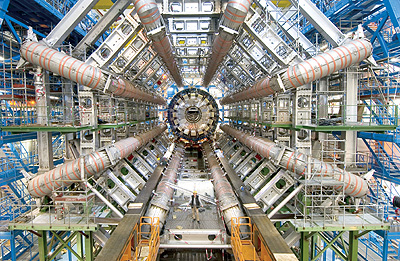 ATLAS W-path Masterclass
ATLAS W-path MasterclassStudents are physicists for a day at a university or lab where they work with physicists to how to analyze real particle physics data in the form of event displays. |
LHC | Level 2 | Conservation Laws, Nature of Matter, Skill: Histograms, Skill: Uncertainty | 1, 2, 4, 5, 6, 7, 8 |
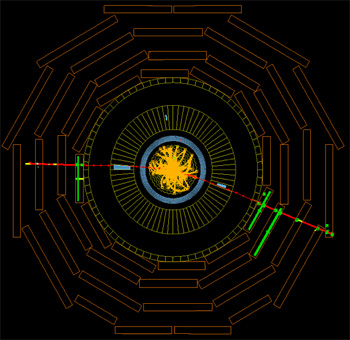 CMS Masterclass WZH-path
CMS Masterclass WZH-pathStudents are physicists for a day at a university or lab where they work with physicists to learn how to analyze real particle physics data in the form of event displays. |
LHC | Level 2 | Conservation Laws, Nature of Matter, Skill: Histograms, Skill: Uncertainty | 1, 2, 4, 5, 6, 7, 8 |
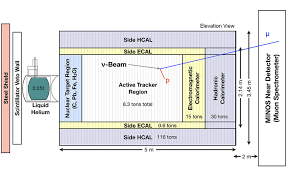 Mean Lifetime Part 3: MINERvA
Mean Lifetime Part 3: MINERvAStudents collect data from muons which decay in the MINERvA detector in the Fermilab NuMi beamline to understand particle decay and determine the muon lifetime. |
Cosmic Ray, Neutrino | Level 2 | Half-Life/Mean Lifetime, Kinematics, Nature of Matter, Skill: Developing Models, Skill: Histograms, Skill: Uncertainty | 2, 3, 4, 5, 7, 8 |
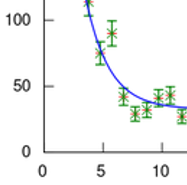 Mean Lifetime Part 2: Cosmic Muons
Mean Lifetime Part 2: Cosmic MuonsStudents learn how physicists measure muon lifetime. |
Cosmic Ray | Level 2 | Half-Life/Mean Lifetime, Nature of Matter, Skill: Histograms, Skill: Uncertainty, Spanish Language, Special Relativity | 2, 3, 4, 5, 7, 8 |
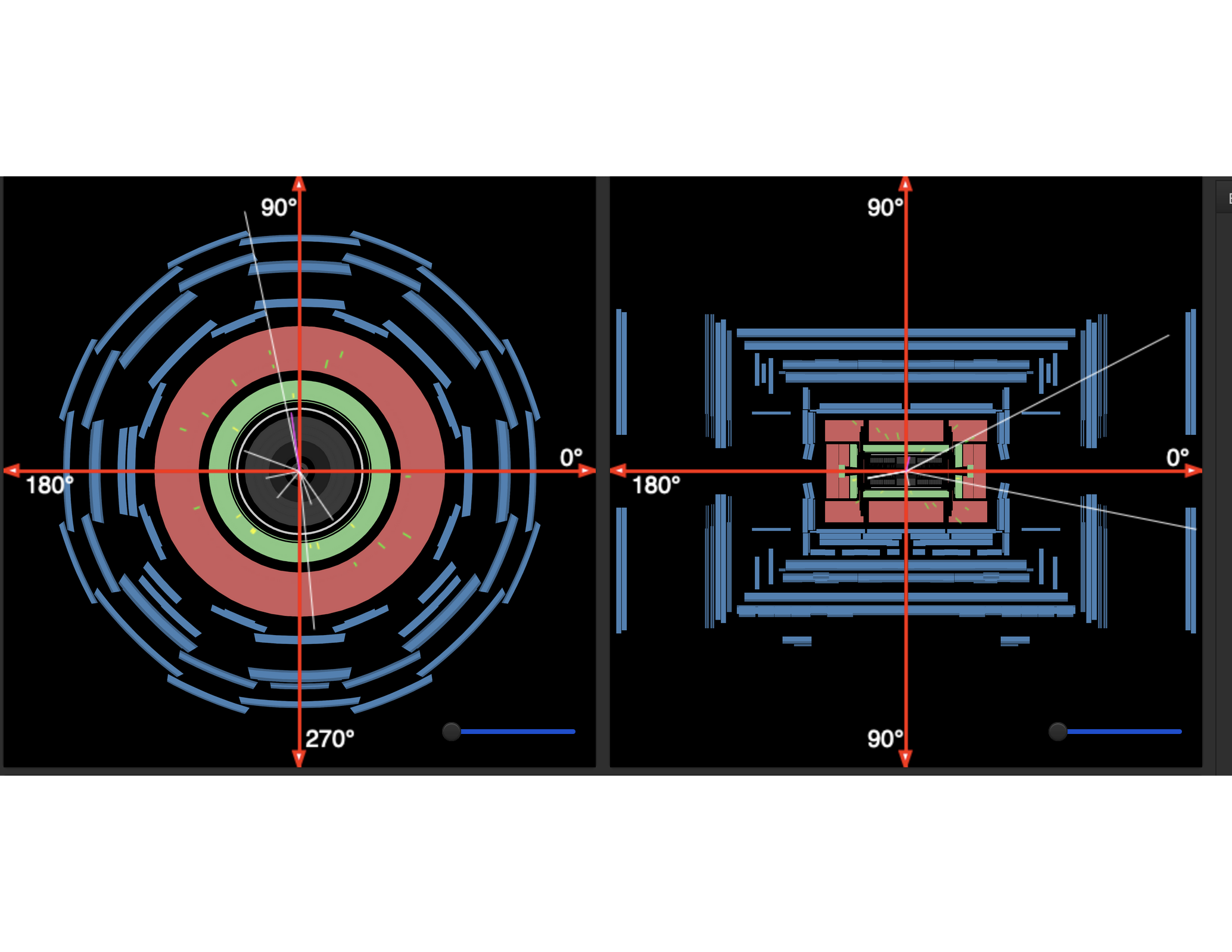 Angles and Dimuons
Angles and DimuonsThis activity is based on the data analysis used for World Wide Data Day, |
Cosmic Ray, LHC | Level 1 | Conservation Laws, Nature of Matter, Skill: Developing Models, Skill: Histograms, Skill: Uncertainty | 2, 4, 5, 6, 7, 8 |
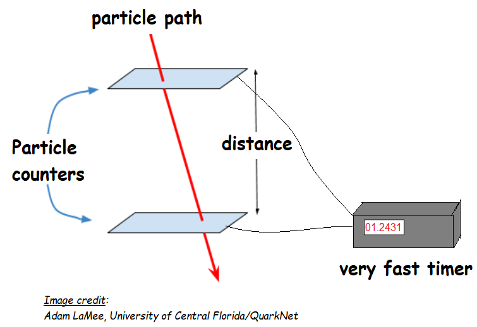 How Speedy are These Muons?
How Speedy are These Muons?In this activity, students use authentic detector data to apply simple 1D kinematics (v=d/t), interpret graphical data, and evaluate measurement uncertainties. |
Cosmic Ray | Level 1 | Kinematics, Nature of Matter, Skill: Graphing, Skill: Histograms, Skill: Uncertainty | 2, 3, 4, 5, 7, 8 |
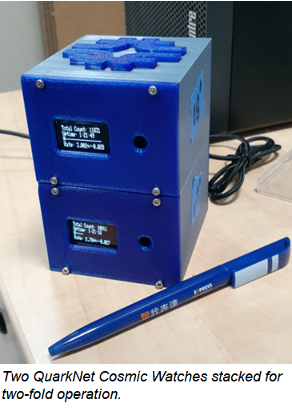 Cosmic Watch Lab Suite
Cosmic Watch Lab SuiteThis Cosmic Watch Suite of data activities describes experiments that can be done either at the singles or two-fold rate. |
Cosmic Ray | Level 1 | Nature of Matter, Quantum Mechanics, Skill: Developing Models, Skill: Graphing, Skill: Uncertainty | 1, 2, 4, 5, 6, 7 |